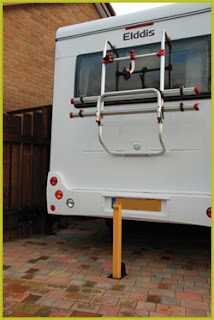 |
Kampa Leggera AIR 260 Caravan Awning 2020 |
Whilst an awning isn’t an essential piece of caravan kit,
they can extend your living space dramatically, giving you more space to relax
and eat, even dry wet clothes, particularly during wet weather.
Think about what you will be using the space for; will it
just be a storage space, or so you want to be able to dine or even sleep in
there?
Will you want to remove side panels so that you can use your
awning as a sun shade, does it need to be lightweight if you are restricted in
terms of weight you can carry, and will it be exposed to the elements a lot and
need to be highly water resistant?
Porch Awning or Full Awning
Firstly, you’ll have the choice between a porch and a full awning. Whilst generally smaller than full awnings, porch styles are easier to erect and less bulky.
For longer holidays a full awning may be a better option,
giving you maximum living space. They’re heavier and can be trickier to erect,
but you won’t be handling them as often.
 |
| Bailey Discovery Air Awning |
Caravan Awning Fabrics
Lightweight polyester dries quickly and makes for an easily
constructed awning, making it perfect for short breaks away. Heavier polyester
is more robust, so is likely to last longer than its lightweight counterpart.
Acrylic fabrics are more rigid, and more resistant to UV
light because of the manufacturing process it undergoes. Acrylic coated
polyester provides UV, mildew and water resistance.
Caravan Awning Frames
Steel awning frames can be good for longer stays &
sturdy enough for a variety of weather conditions, but heavy if you have to
frequently build & transport.
Aluminium & Glass-Fibre are lightweight & easy to
handle, but can be compromised in bad weather.
Air (Inflatable awnings) are easy to erect & quick,
especially if you have an electric pump.
What Size Awning Do I Need?
Awning sizes are called A-measurements and the size of
awning you need will depend on the length of your caravan. The A-measurement is
the distance around your caravan’s awning channel plus the distance from the
end of the channel to the ground.
Head to your caravan manufacturer to find out your awning
size – most will have a resource on their website to help you.
How Much Should I Pay?
Porch awnings start at around £150.00, whilst you can expect
to pay upwards of £600 for a full awning. If you’re likely to be using your
caravan awning frequently, for extended periods of time, it would make sense
spend a decent amount – it’s worth investing in a good quality product which is
designed to last. If you tour less frequently, or just for a few days at a
time, a budget option may be a better choice.
Caravan awnings are covered by quality standard BS ENISO
8936 – Awnings for Leisure Accommodation Vehicles. Before making a purchase,
it’s a good idea to check that your chosen awning carries this award.
Caravan Awning Tips
- Never pack an awning away when it is wet, or even slightly damp, as this is highly likely to result in mildew forming.
- Avoid storing your caravan awning in your caravan over winder, as the conditions will be too damp.
- Re-proof your awning yearly.



























